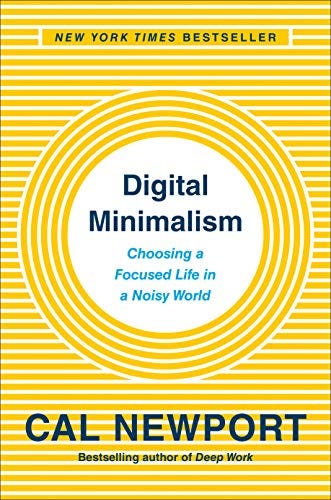Thriving Autonomy
Starting an internship or new job this summer? Or maybe just looking to tune up your work habits? Here is a time-management method to succeed when you are in control of your time.
Autonomy is a double-edged sword. We know that a level of control over our work is a good thing and gives us a sense of ownership, and independence that feels good. But, the flip side is that if we are the ones calling the shots, we have to make the decisions about how to spend our time and prioritize; separating the important from the urgent.
As we head toward the summer, I’m sitting down and making a plan (so type-A, right?). The autonomy of an academic is perhaps unparalleled and so I often find myself wrestling with how to spend my time most effectively. The method I use is a lightly adapted version of ideas from Cal Newport that I call hierarchical, multi-scale time management. In the next few paragraphs I hope to give you a glimpse of how I use this strategy with the hope that you might find parts of it you might find helpful for your own planning strategy.
The basic game plan is:
Core Values
Semester/Quarter Planning
Weekly Planning
Daily Time Blocking
These four layers form a tower with each new layer standing on the ones below it.
Core Values
This is a document that lists out the things that drive you. I break this down into three separate subheadings: Personal Values, Career Strategic Plan, and Personal Strategic plan. In my Personal Values I articulate what is most important to me and what I want to prioritize. For example, that I strive to value people over things in all circumstances and to grow in knowledge, character, and humility. I use the 4C buckets that I talked about a few weeks ago to break down how I apply these.
Semester/Quarter Planning
This is the first level of planning. The main goal is to zoom out and think about a long enough time scale that will allow you to set some goals that would really move the needle. These goals should align with your core values and be ambitious enough that you will need the entire semester to make significant progress on them. For me, these semester goals are centered around the big tasks I hope to achieve as part of my teaching or scholarship; perhaps a new proposal I wish to write or a new course I want to develop. These goals should be relatively succinct (maybe a sentence or two at most).
Weekly Planning
The weekly plan stems from the semester plan. At the beginning of each week I take a half hour or so to sit down and plan out my week. As part of this process I:
Review my personal values, the Harvey Mudd missions statement, and the goals set forth in our Faculty Notebook for Reappointment, Promotion, and Tenure.
Review my semester goals
Review last week’s plan to see what I was able to accomplish, what was left undone, and any lessons that I can apply to this week.
After this review and reflection step, I sit down and sketch out the tasks that I want to accomplish each day that week. This starts with my calendar for any scheduled meetings, classes, or other deadlines. Then, I pull from my master task list where I keep a list of all the tasks that are on my plate. Based on how much time I expect to have on a given day for work, I decide how many and which tasks to schedule for a given day.
This is an imprecise science, but if you do it consistently, over time you will develop a better sense of what is reasonable to accomplish in a given day.
Daily Time Blocking
The final level of granularity is daily time blocking. I’ve written about this before, but the basic idea is to give every 30-minute chunk of time during your workday a task. The exact length of the block is up to you, but I find that 30 minutes is about the right level of granularity. You can either use a physical notebook to do this or something like the spreadsheet that I talked about in my previous post about this.
The Bottom Line
One of my favorite lines (credited to Dwight Eisenhower) is “plans mean nothing; planning is everything.” I find that this hierarchical, multi-scale framework helps me to effectively align the way I spend my time each day with my overall goals in life – and to offer the feedback necessary to course correct when the inevitable drift occurs.
The Book Nook
Digital Minimalism by Cal Newport might be one of the most important books I’ve read in the past few years. In it, Cal puts his finger firmly on what is arguably one of my biggest challenges as someone who loves and enjoys technology: making sure that I am using my technology instead of the technology using me.
If you haven’t read it yet, I highly recommend that you put this one on your summer reading list. Cal’s main thesis in the book is that we need to intentionally use technology to achieve certain goals and make sure that we don’t mindlessly buy into the marketing hype that we need to be connected all the time. Turns out that this is making us lonelier than ever.
I really appreciate the Amish and their approach to technology. Contrary to popular opinion, the Amish are not Luddites – that is, they are not anti-technology. Instead, they cautiously consider the technology that they use to ensure that it doesn’t erode relationships and their community. While it is likely that you will draw the line in a slightly different place (e.g., everyone I know has electricity in their home), I think that we should at least spend the time to realize that there is a line to be drawn and we should thoughtfully consider where we draw it.
P.S. This is a great read from Anne Helen Peterson which hits on some of these same themes.
The Professor Is In
As the spring semester wraps up I am starting to look toward the fall and that means… MicroPs! Since coming to Harvey Mudd I’ve had the privilege of inheriting the reins of this course from colleagues who created a very stable and well-designed course. This is a fun class with lots of great hands-on learning. Every year I try to tweak something in the class to make it better and improve on the past iteration.
The course is focused around embedded systems: digital design on a field-programmable gate array (FPGA) and microcontroller (MCU) programming. It’s an exciting time to be in the embedded systems space with the proliferation of more accessible, low-cost, and easy-to-use FPGA development boards and toolchains.
We’ve historically used Altera/Intel FPGAs (the Cyclone IV 2019 and previous and the MAX 10 last year) but this year I am experimenting with a Lattice FPGA – specifically the ICE40UP5K on the UPduino v3.1 dev board.
This board has a lot to offer at its $25 price point. The ICE40UP5K FPGA has a decent number of logic elements at 5300 along with some DSP blocks and RAM blocks (1 Mb single-port, 120 Kb dual-port). The board also features on-board USB programming, all the FPGA and FTDI pins brought out to headers, a 12 MHz oscillator, 4 MB qSPI flash, and an RGB LED.
This board is a similar idea to the fomu board I wrote about earlier this year, but is more amenable to breadboarding which is better for a course. To top it all off, it benefits from some freedom with respect to toolchain: as opposed to Intel FPGAs, the Lattice ICE FPGAs can be programmed with open-source tools using the icestorm project (most easily accessed through apio).
More to come on this in the weeks to come, but I’m looking forward to getting to work more with these boards and exploring how they can be used to teach digital design and embedded systems!
Leisure Line
Another week, another amazing Mets comeback. This one was even more impressive than last week’s. The actual comeback itself was amazing, but Gary Cohen’s broadcast call was almost better. Gary, Keith, and Ron are the best.

Still Life
I’m continually amazed at the macro mode on my iPhone. Pretty amazing shot of a grasshopper that I found while exploring with the toddler out on the lawn a few weeks ago.








